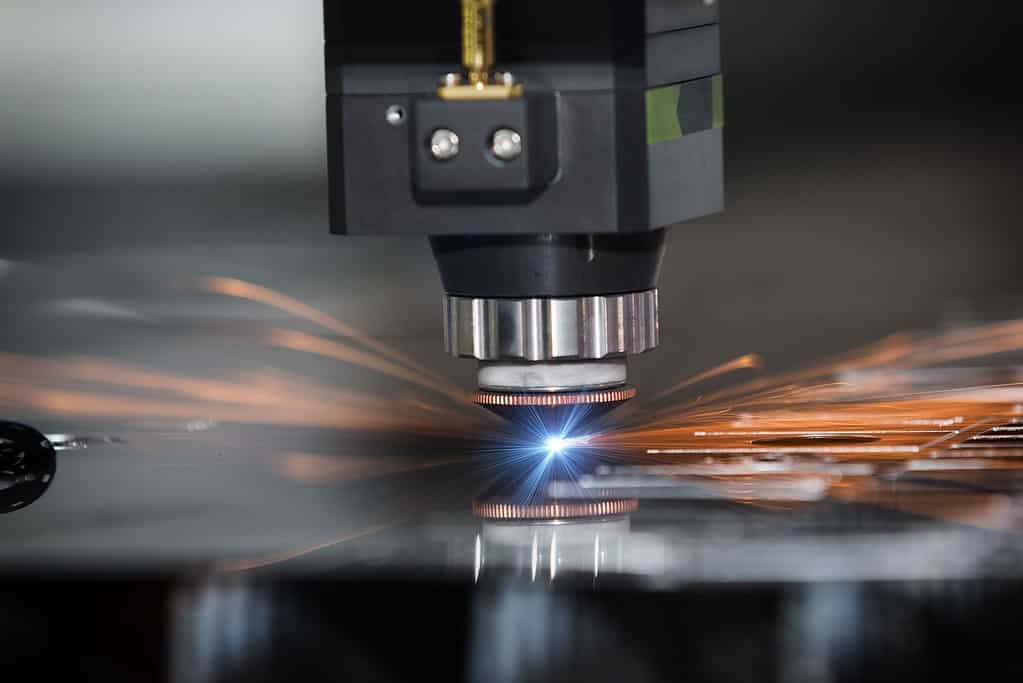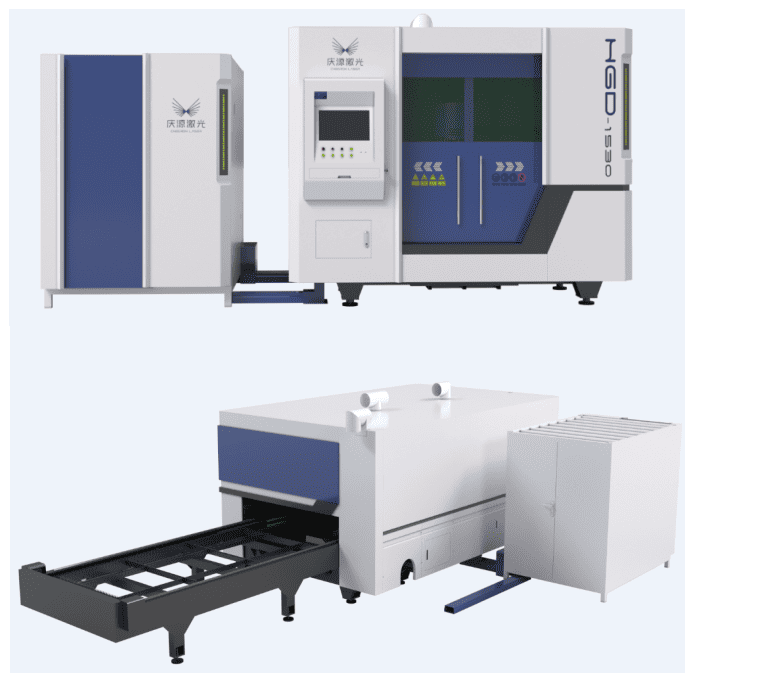
The properties of highly reactive materials make the laser cutting process more challenging, as most of the laser energy is reflected rather than absorbed.
In order to avoid damage to the laser and to ensure the quality of the cut, it is important to understand the principles and considerations for cutting highly reflective materials
The following principles and considerations need to be taken into account when cutting highly reflective materials with a laser cutter:

Principle:
Highly anti-reflective materials, such as copper, have very low absorption of infrared laser at room temperature, usually only 5%. And when the material is in the melting state, the absorption rate can be up to 20%. This means that 80% of the laser light is reflected during the cutting process, bouncing off at various angles.
There is a high probability that it will be returned vertically to the cutting head along the original optical path into the optical device and the fusion point, resulting in an increase in temperature that may cause the device and the fusion point to burn out.
Precautions:
1. Use conservative cutting parameters: Ensure that each cut cuts through the material to ensure that the light travels in a downward direction to minimize the effect of reflected light on the device and fusion point.
2. Monitor for optical path anomalies: Do not attempt to continue cutting if you notice any anomalies in the optical path, stop the operation immediately and call a professional to confirm the problem before proceeding. This will prevent further damage to the laser device and the fusion point.
3. Controlling Device Temperature: Temperature control of the fusion point inside the laser is very important. When cutting highly reactive materials, special attention should be paid to controlling the device temperature to prevent damage to the device due to overheating.
Although cutting highly reactive materials can be challenging, modern laser cutter manufacturers are continually improving the laser’s ability to cut highly reactive materials.
Therefore, following the above precautions when cutting highly reflective materials can minimize damage and ensure safe operation.
By focusing on the principles of fiber laser cutting machines and observing the appropriate precautions, we can better master the technique of cutting highly reflective materials, thereby protecting the laser device and fusion point and ensuring the effectiveness and quality of the cut.
When using a laser cutting machine to cut highly anticorrosive materials, we need to keep several key principles in mind. First, choose cutting parameters conservatively to ensure that each cut will penetrate the material and propagate the light downward.
Second, monitor the optical path for anomalies in a timely manner, and once a problem is detected, stop the operation immediately and seek professional help. Finally, pay attention to controlling the temperature of the device to ensure that the fusion point temperature is within a safe range.
By following these principles, we can minimize the risk of damage to the laser device and fusion point, ensuring the safety and quality of the cutting process.
